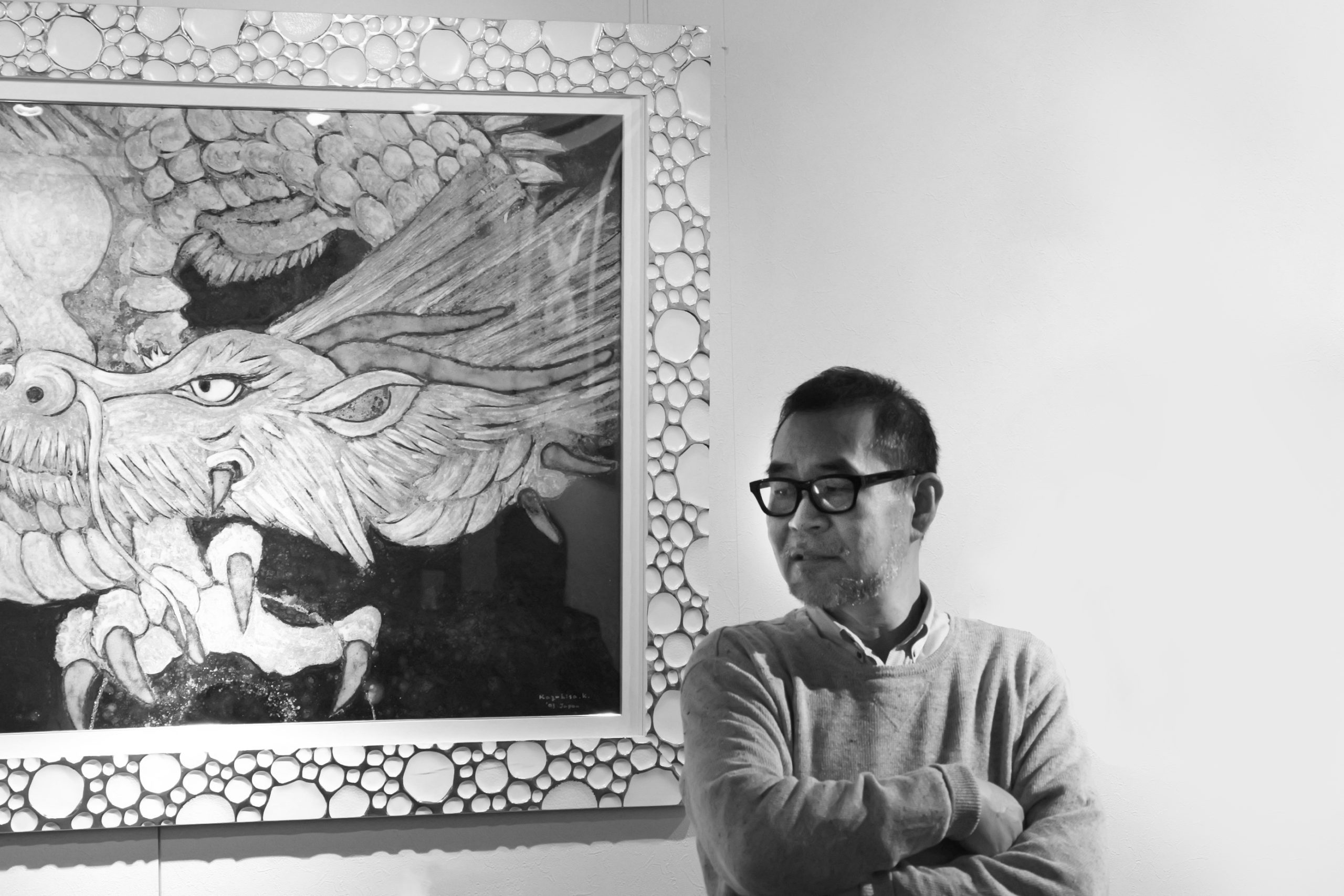Artist Introduction

Thoughts entrusted to Tosaiga
Artist Kazuhisa Kusaba’s consistent theme as an artist is “life”, and Tosaiga is a means of expression for “praying for life”.
After choosing a way of life as an artist who expresses something, he became a backpacker and traveled around the world, mainly in Asia, in order to gain experience as a source of expression.
In India, where he first visited, he felt a sense of dynamism in life, and suddenly understood the natural fact that we have “life”.
There is an expression that it was like being struck by lightning, but it might have been the feeling that he felt.
The whole body was uplifted by pure joy, every scene felt fresh and wonderful, and it struck his heart to the point of tears. And he realized that this feeling is the starting point of creation and that every artist makes this feeling of this moment into “poetry”.
In addition, Kusaba says that seeing that opposite things like beautiful and ugly things exist together in chaos in India, made him feel as if he was looking inside his own mind, and that he noticed that everything changes in meanings and views with one different point of veiw of us.
“Life” in the theme of “praying for life” does not refer to living people and living things.
The water flows from the mountain to the river and to the sea, and it becomes rain to pour onto the mountain again. Blessing of lands that receive water and bloom in rich. Animals eat them to live and other animals who eat them. A new life born and raised. A life entrusted from parents to a child, a child to a grandchild.
This world itself, which exists as all the things circulate vertically and horizontally, is “life”, and each of us can become a part of and every part of that “life” depending on our own consciousness and perspective, and that is “life” that Kusaba wants to cherish through Tosaiga.
In order to express the precious brilliance of “life”, the undefinable variety of colors, and the fact that we are also a part of it, the technique of Tosaiga that combines sparkle and vividness was developed.
The consistent theme is “life”, and Tosaiga is a means of expression for “praying for life”.
All the production processes of Tosaiga are filled with fellowship with nature, such as being made of soil, Mother Earth, glaze shining with the power of fire through dialogue with minerals, and “entrusting to fire” by abandoning artist’s preferences.
Tosaiga is a challenge how to assimilate with nature, and so the production process itself can also be called to be an expression of life.
The more you stick to the consiousness of your little self ,the more painful it gets in this world where a lot of things are beyond our control, but it’s also a lesson of “life” that you can be more free if you don’t cling to yourself and face “life”.
Kusaba expresses it as ‘entrusting.
Kilning is literally ‘entrusted to the fire’.
Even thought it is a work that he had worked hard to produce, once it is in a kiln he can no longer reach it, and worrying or clinging to it does not help the procces.
The work can result in something he did not want, or it can be brilliant beyond the artist’s thoughts and imaginations.
Something more wonderful than beautigul things that you can make as you wish can be gained when you let go of your personal thoughts.
Kilning is a symbol of letting go of your clinging and attachment and entrusting yourself to the reason of nature, and it seems to be a process that blends into everything rather than a part of “life”.
For example, mythology and bodhisattvas were used as motifs not because he wanted to depict God itself, but because he wanted to create works that would give people a sense of awe and a sense of security that they would feel when they were in front of a great will circulating “life”, and an existence that some people might call nature or God.
He drew dragons and phoenixes because he wanted to share his admiration for their strength and beauty, and he wants you to wish to live freely like them.
Through works depicting flowers, Mt. Fuji, and nature, he want you not only to look at the beauty of nature, but also to feel that you have the same beauty.
If an adult curls his back and sighs with his dark eyes trapped by doubts of this world, the children who see it will lose hope for the future as well.
Each of us must be role models for the next generation.
It is a prayer put inTosaiga works which ‘prays for life’ that he wants to encourage people who see his work to look for true happiness, and to feel joy of living with open mind even in difficulties, instead of just enduring the hard and sad things to “consume” life to survive.
